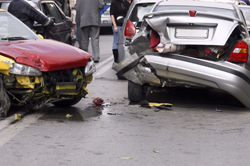Car crash compatibility could save lives
The EU is continuously striving to minimise road accidents through enhanced research on the topic and innovative solutions. One important research topic is crash compatibility between vehicles that are involved in frontal collisions, a concept which is crucial for saving lives. The EU-funded project 'Frontal impact and compatibility assessment research' (Fimcar) studied the effects of compatibility and incompatibility on cars and victims to improve knowledge on the subject. It researched frontal impact accidents and reviewed testing procedures with the aim of leading to better vehicle design. The project examined metrics and methods to assess compatibility in order to identify the most ideal test procedures, taking into consideration cost effectiveness and predicting future vehicle characteristics. While frontal impact crashworthiness of cars has improved significantly in recent years, there is a need to review crash data based on the latest fleet of cars on the market. The project team believed taking this approach would enable them to formulate more ways to help minimise accidents. By analysing accident statistics, vehicle strength, injury patterns and images of accidents, the Fimcar members worked on recommendations and guidelines that can help decrease accident risks. After a series of rigorous crash tests, the team concluded that poor structural interaction between vehicles (e.g. low overlapping and car fronts) played a major role in compatibility of current generation vehicles. It found that frontal force and compartment strength mismatches between cars were not a key issue compared to structural interaction. On the other hand, the project team ascertained that compartment strength is an important consideration in accidents involving heavy goods vehicles. In summary, Fimcar worked on understanding if compatibility issues identified in previous studies are still relevant in the current vehicle fleet. It investigated the current nature of occupant injuries and injury mechanisms, creating in-depth knowledge that will help the car industry produce better vehicles. These tests and their results are expected to make driving safer and lengthen the lives of European drivers, thanks to a set of emerging stricter design requirements and observations.



